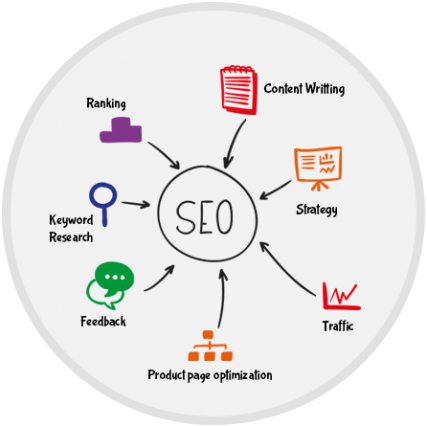How to Optimize Product Page SEO Keywords for More Sales
Introduction
In the ever-competitive eCommerce landscape, getting your product pages to rank on search engines is crucial for driving traffic and increasing sales. Product page SEO is all about optimizing your content with the right keywords to improve visibility. But how do you nail it down for more sales? Let’s explore the steps to optimize product page SEO effectively.
Understanding the Importance of Product Page SEO
What is Product Page SEO?
Product Page SEO is the practice of optimizing product pages on your website for search engines. This includes using the right keywords, writing compelling product descriptions, and ensuring your pages load quickly, among other factors.
Why Does Product Page SEO Matter?
Optimizing your product pages is essential because it makes it easier for customers to find your products. Search engines like Google rank product pages based on relevance, and a well-optimized page can result in higher rankings, more traffic, and increased sales.

Keyword Research for Product Pages
Importance of Keyword Research
Choosing the right keywords is the foundation of SEO. For product pages, keywords should reflect the search terms your potential customers are using. Identifying high-traffic, low-competition keywords can help your product page stand out.
Long-tail Keywords vs. Short-tail Keywords
Long-tail keywords are specific phrases that target niche markets, whereas short-tail keywords are more general. Long-tail keywords like “best leather boots for winter” often result in higher conversion rates because they target more specific searches.
Tools for Keyword Research
There are various tools to help you find the right keywords, such as Google Keyword Planner, Ahrefs, and SEMrush. These tools can show search volume, competition, and keyword difficulty.
Optimizing Title Tags and Meta Descriptions
What Are Title Tags and Meta Descriptions?
Title tags and meta descriptions are HTML elements that describe the content of your product page to search engines.
How to Write SEO-friendly Title Tags
Title tags should be concise, include your primary keyword, and entice users to click. Aim for around 50-60 characters.
Best Practices for Meta Descriptions
Meta descriptions should provide a clear and engaging summary of your product, be around 150-160 characters, and include the target keyword.
Crafting SEO-friendly Product Descriptions
How Product Descriptions Affect SEO
Product descriptions are not just for providing information to customers—they also play a significant role in SEO. Including relevant keywords can make your page more discoverable by search engines.
Tips for Writing Keyword-Optimized Product Descriptions
- Focus on natural keyword integration.
- Keep descriptions clear and informative.
- Highlight features and benefits to make them persuasive.
- Avoid keyword stuffing.
Common Mistakes to Avoid in Product Descriptions
- Using duplicate content from other sites.
- Overstuffing keywords.
- Ignoring the emotional appeal that convinces customers to buy.
Optimizing Product Images for SEO
Why Image Optimization is Crucial
Optimized images not only enhance the user experience but also help search engines understand what your product page is about. Unoptimized images can slow down your site, hurting your SEO.
Using Alt Text for SEO
Alt text provides a description of your image to search engines. Ensure that your alt text is descriptive and includes relevant keywords.
Optimizing Image File Names
Before uploading images, rename the file to something relevant, like “leather-boots-winter.jpg,” instead of a generic name like “IMG_1234.jpg.”
Improving URL Structure for SEO
Importance of Clean URL Structures
A well-structured URL helps both users and search engines understand what your page is about. Clean URLs can improve your ranking and are easier to share.
Best Practices for Optimizing Product Page URLs
- Keep URLs short and descriptive.
- Include the primary keyword.
- Avoid using unnecessary numbers or symbols.
Internal Linking for SEO Benefits
How Internal Links Boost SEO
Internal links help search engines crawl your site more effectively and spread link equity across your pages, which can improve rankings.
Where to Include Internal Links on Product Pages
Link to related products, blog posts, or categories that might be useful to the customer. This also keeps visitors on your site longer.
Utilizing User-Generated Content
Why Reviews and Ratings Matter for SEO

Search engines value user-generated content like reviews because it provides fresh, relevant information. Reviews also help to build trust with potential customers.
Encouraging Customers to Leave Reviews
Provide incentives like discounts or loyalty points to encourage customers to leave reviews. Make it easy for them to do so by simplifying the review process.
Page Speed and Its Impact on SEO
Why Page Speed Matters
Fast-loading pages create a better user experience and rank higher on search engines. Google’s algorithms prioritize sites that load quickly.
How to Improve Product Page Loading Speed
Compress images, use a content delivery network (CDN), and reduce server response times to ensure your pages load quickly.
Mobile Optimization for SEO
Why Mobile Optimization is Essential
With more people shopping on mobile devices, it’s vital that your product pages are mobile-friendly. Google also uses mobile-first indexing, meaning it primarily considers the mobile version of your site for ranking.
Best Practices for Mobile-Friendly Product Pages
- Use responsive design.
- Ensure buttons and links are easy to tap.
- Simplify navigation for smaller screens.
Leveraging Social Proof for Better SEO
How Social Sharing Buttons Affect SEO
Social sharing buttons make it easier for customers to share your products, which can increase traffic to your site. While social signals don’t directly affect rankings, they can contribute to more backlinks.
Adding Social Proof to Product Pages
Include testimonials, reviews, and user-generated content to build trust and enhance your SEO.
Schema Markup for Product Pages
What is Schema Markup?
Schema markup is code that helps search engines understand the content of your page. It can result in rich snippets, like showing product prices or ratings directly in search results.
How Schema Markup Improves SEO
By using schema markup, you can enhance how your product page appears in search results, making it more appealing and informative to potential customers.
Tracking SEO Performance
Why Tracking is Important
Tracking allows you to measure the effectiveness of your SEO efforts and adjust your strategy accordingly.
Tools for Monitoring Product Page SEO Performance
Google Analytics and Search Console are essential tools for tracking traffic, user behavior, and keyword performance.
Conclusion
Optimizing your product pages for SEO is a comprehensive task, but the rewards are worth it. By focusing on keyword research, image optimization, internal linking, and mobile responsiveness, you can drive more traffic and ultimately boost sales. Implement these strategies and start seeing your product pages rank higher.
2024-09-05 16:42:39
